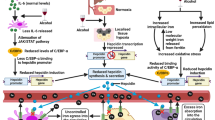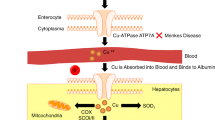Abstract
Decreased serum ubiquinone-10 concentrations is a common condition in patients with phenylketonuria (PKU) under dietary treatment. Our aim was to investigate the implication of the metabolic abnormalities of PKU (low concentrations of tyrosine and high concentrations of phenylalanine) and the effect of treatment with phenylalanine-restricted diets in decreased ubiquinone-10 concentrations in PKU patients. We studied 30 PKU patients (age range 5 months to 35 years; median age 7 years) under dietary treatment. Correlation between plasma tyrosine or phenylalanine and serum ubiquinone-10 concentrations was investigated. Daily cholesterol intake was caulculated from the data obtained through a dietary questionnaire. The index of dietary control (IDC) was calculated as the average of the medians of plasma phenylalanine concentrations obtained every 6 months in the metabolic control of patients. Negative correlations were observed between serum ubiquinone and the IDC (r=−0.46; p<0.01) in PKU patients. No correlation was observed between tyrosine or daily cholesterol intake by multiple linear regression analysis, for each 113 units of increase in IDC values serum ubiquinone decreased 0.1 µmol/L. According to our results, the main factor associated with the decreased serum ubiquinone concentrations was high plasma phenylalanine values. Although daily cholesterol intake seems to be associated with ubiquinone concentrations, it may not be relevant if we take into account the low intake of cholesterol in treated PKU patients.
Similar content being viewed by others
REFERENCES
Artuch R, Moreno J, Quintana M, Puig RM, Vilaseca MA (1998) Serum ubiquinone-10 in a pediatric population. Clin Chem 44: 2378-2379.
Artuch R, Vilaseca MA, Moreno J, Lambruschini N, Cambra FJ, Campistol J (1999) Decreased serum ubiquinone-10 concentration in phenylketonuria. Am J Clin Nutr 70: 892-895.
Castillo M, Zafra MF, García-Peregrín E (1988) Inhibition of brain and liver 3-hydroxy-3-methylglutaryl-CoA reductase and mevalonate-5-pyrophosphate decarboxylase in experimental hyperphenylalaninemia. Neurochem Res 13: 551-555.
Crane FL, Sun IL, Sun EE (1993) The essential functions of coenzyme Q. Clin Invest 71: S5-S59.
Ernster L, Dallner G (1995) Biochemical, physiological and medical aspects of ubiquinone function. Biochim Biophys Acta 1271: 195-204.
Folkers K, Osterborg A, Nylander M, Morita M, Mellstedt H (1997) Activities of vitamin Q10 in animal models and a serious deficiency in patients with cancer. Biochem Biophys Res Commun 234: 296-299.
Hanley WB, Lee AW, Hanley AJG, et al (2000) 'Hypotyrosinemia’ in phenylketonuria. Mol Gen Metab 69: 286-294.
Hübner C, Hoffmann GF, Charpentier C, et al (1993) Decreased plasma ubiquinone-10 concentration in patients with mevalonate kinase deficiency. Pediatr Res 34: 129-133.
Lenaz G, Parenti Castelli G, Fato R, et al (1997) Coenzyme Q deficiency in mitochondria: kinetic saturation versus physical saturation. Mol Aspects Med 18: S25-S31.
Mitchell P (1991) The vital protonmotive role of coenzyme Q. In Folkers K, Littarru GP, Yamagami T, eds. Biomedical and Clinical Aspects of Coenzyme Q. Amsterdam: Elsevier, 3-10.
Pietz J, Dunckelmann R, Rupp A, et al (1998) Neurological outcome in adult patients with early-treated phenylketonuria. Eur J Pediatr 157: 824-830.
Scriver CR, Kaufman S, Woo SLC (1995) The hyperphenylalaninemias. In Scriver CR, Beaudet AL, Sly WS, Valle D, eds. The Metabolic and Molecular Bases of Inherited Disease, 7th edn. New York: McGraw-Hill, 147-160.
Shefer S, Tint GS, Jean-Guillaume D et al (2000) Is there a relationship between 3-hydroxy-3-methylglutaryl coenzyme A reductase activity and forebrain pathology in the PKU mouse? J Neurosci Res 61: 549-563.
Sobreira C, Hirano M, Shanske S, et al (1997) Mitochondrial encephalomyopathy with coenzyme Q10 deficiency. Neurology 48: 1238-1243.
Stocker R, Bowry VW, Frei B (1991) Ubiquinol-10 protects human low-density lipoprotein more efficiently against lipid peroxidation than does α-tocopherol. Proc Natl Acad Sci USA 88: 1646-1650.
van Sprosen FJ, van Dijk T, Smit GPA, et al (1996) Large daily fluctuations in plasma tyrosine in treated patients with phenylketonuria. Am J Clin Nutr 64: 916-921.
Weber C, Bysted A, Holmer G (1997) The coenzyme Q10 content of the average Danish diet. Int J Vitam Nutr Res 67: 123-129.
Zierz S, Von Wersebe O, Bleistein J, Jerusalem F (1990) Exogenous coenzyme Q (CoQ) fails to increase CoQ in skeletal muscle of two patients with mitochondrial myopathies. J Neurol Sci 95: 283-290.
Rights and permissions
About this article
Cite this article
Artuch, R., Colomé, C., Vilaseca, M.A. et al. Plasma phenylalanine is asociated with decreased serum ubiquine-10 concentrations in phenylketonuria. J Inherit Metab Dis 24, 359–366 (2001). https://doi.org/10.1023/A:1010500502275
Issue Date:
DOI: https://doi.org/10.1023/A:1010500502275




